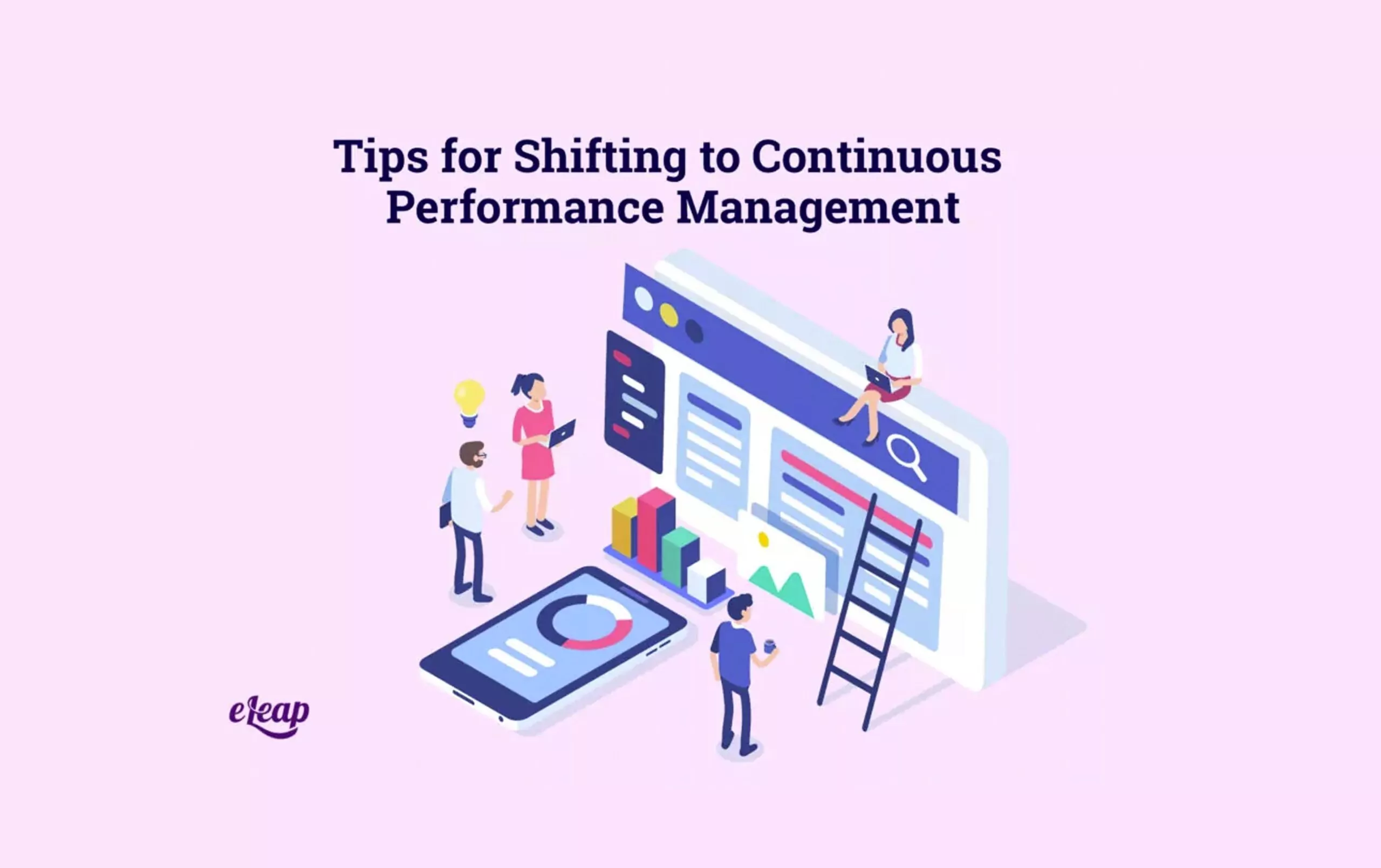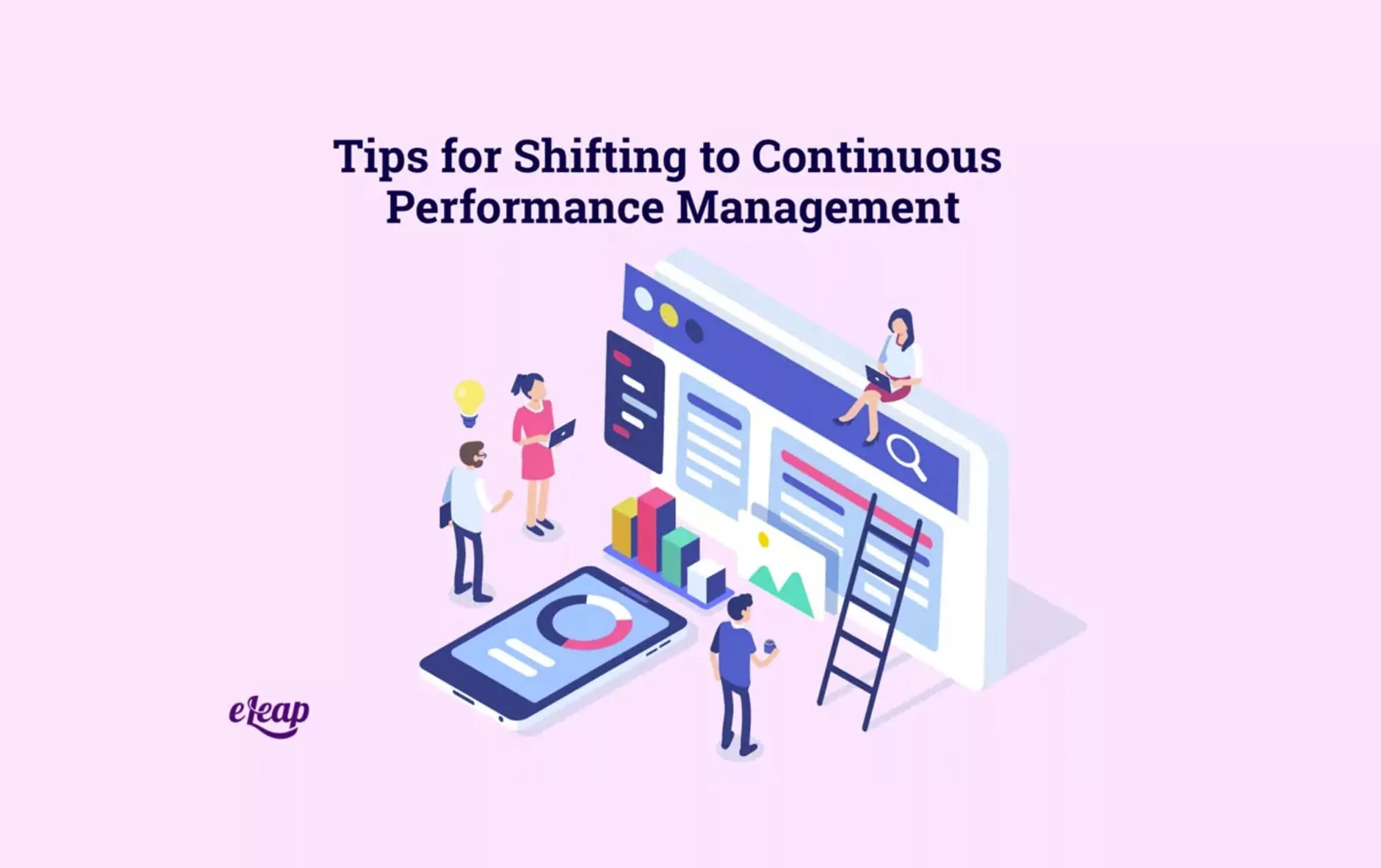Tips for Shifting to Continuous Performance Management

In today’s fast-moving world, talent management professionals often recommend the implementation of continuous performance management. This is the most efficient alternative to annual performance reviews, which are associated with a host of downfalls.
Even if you have already decided to implement continuous performance management, you may not be sure where to start. Conversations about making changes abound, but there aren’t as many resources for what steps should be taken to transition from traditional performance management to continuous performance improvement processes.

Benefits of Continuous Performance Management
You may already have some insights into the benefits provided by continuous performance management, which include:
- More frequent feedback for employees
- Open and honest communication
- One-on-one check-ins between managers and employees
- Key results and objectives knowledge
- Adaptive employee management options
All of these things go above and beyond the traditional performance management that many organizations continue to use.
Challenges of Implementing Continuous Performance Management Systems
On the other hand, there are also challenges to implementing a continuous performance management system. Management and HR leaders will need to deal with things like the following:
- Choosing the best quality software and tools for continuous performance management
- Setting realistic employee and stakeholder expectations
- Choosing operational processes that empower HR teams and managers
- Securing buy-in from both employees and company decision-makers
Below, we’ll share more information about tips that can make the process of implementing continuous performance management more manageable than you might expect.
Tips for Shifting to Continuous Performance Management
Start Slow and Keep Building
Experts often recommend slowly scheduling the integration of continuous performance management into the calendar. For instance, managers might take one one-on-one each month and use it as a time to review goal progress with teams and provide transparent feedback about performance.
This is one way to change things, so managers don’t feel as if their entire workday has shifted. It also has the benefit of being something any leader can implement on their own time instead of requiring the organization to launch a whole new calendar to start managing employee performance.
Other tips that help implement continuous performance management without as much risk include:
- Start slow – Speak to critical stakeholders and decision-makers involved in the company. Then, bring together external and internal research that makes a case for changing the current processes and moving to more efficient software for continuous performance management.
- Gather feedback and research – This can be boiled down to a single question. What simple changes can be made now that will create the most significant return on investment (ROI) for performance? In many cases, the answer will be developing goals and having frequent check-ins.
- Experiment – Rather than having the entire organization change things immediately, consider choosing a single unit or department. Then, roll out the changes there first to get an idea of what works and what might need to be thought about more.
Work From the Organization’s Strategic Goals
The best project management system starts with analyzing what needs to be produced using which cognitive and behavioral tasks. Once that is understood, managers can provide feedback about what creates more positive performance or increases performance to a more acceptable level.
When the organization and its employees align, it creates better motivation for everyone. Each member of the team knows the part they play to create a successful business. It also builds a more adaptable organization that can handle the ups and downs associated with the marketplace.
This is based on working towards daily goals, whether that means boosting sales, increasing productivity, or having faster customer response time, and gains more meaning when the organization’s vision is considered.
For example, if a manager knows that their job of providing news stories to the public meets the organization’s vision of being a trusted source of news, that context matters. It helps this person and those they work with understand the importance of their role. It also makes the workplace a more motivating environment.
Implement Vision Ambassadors
If you need to motivate and inspire people across a large organization encompassing many locations, departments, roles, and personalities using continuous performance management, the way you approach the process is crucial.
If you are too vague about the vision, nobody is going to pay much attention to it. But if the vision seems too specific, some workers may not feel as if it applies to them and the tasks they do.
Some entrepreneurs recommend choosing a vision that is practical and exciting by asking questions like the ones below:
- What objectives need to be met on a long-term basis?
- What is the primary purpose of your organization?
- What core values are the most important to the business?
After those questions are answered, HR staff, management, and executives can take the vision and make it more appealing and motivating to team members. But another option is using vision ambassadors.
This is similar to a brand ambassador. The people tasked with this role will ensure the organization’s vision is constantly emphasized and on workers’ minds. Those who act as ambassadors can be employees, trusted managers, and even members of leadership.
Many people trust the people they know over company statements. If an appreciated peer is spreading the message, people will likely be more enthusiastic about it.
Provide Tools for Feedback
When moving from traditional performance management to continuous performance management, employees and managers need to know how to share feedback and manage goals. In addition, it’s essential to the process of switching over systems and processes.
Having efficient processes and tools helps you succeed while giving team members a way to prepare for the change. This can be just as essential as having leadership sponsor the change. All good managers should be capable of taking and providing feedback, especially when implementing continuous performance management.
The way feedback is delivered will depend on the specific situation and whether the news is constructive or positive. However, several steps take place in any case:
- Seek out permission to offer feedback
- Explain what has been observed
- Note the impact of what was observed
- Take a pause and listen
- Recommend the next step
When you use the steps above to move from traditional to continuous performance management, it can make a huge difference in your success. Use these tips to understand how to streamline the process, and it will make the process easier for everyone involved in the organization.